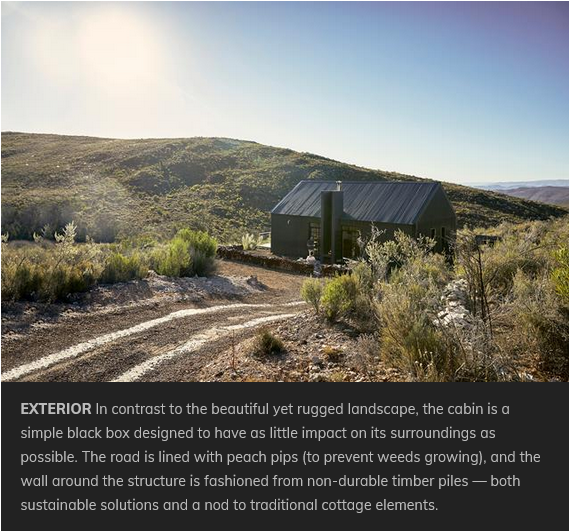
With endless views of South Africa’s spectacular Klein Karoo, this contemporary cabin on a remote farm combines simple luxury with sustainable design.
Who lives here: Couple Cobus Van Wyk and Ruan Van Der Venter, or paying guests.
Style of home: A weekend getaway for two made from a range of materials.
Location: In the middle of a 350-kilometrelong valley in Western Cape province.
Timeline: The design-and-build process took approximately two years.
A contemporary, off-grid cabin built on the edge of a nature reserve in South Africa’s Klein Karoo has become a special retreat for owners Cobus Van Wyk and Ruan Van Der Venter. The couple first discovered the semi-desert location through a property platform in 2015 and, after 16 years’ living in the UK, they returned home to start building on it.
On their 45-hectare parcel of pristine wilderness, they envisioned a cabin where they could devote themselves entirely to hiking and stargazing. What resulted after two years of planning and building is a stunning homestead they’ve named Suidster (meaning ‘Star of the South’ in Afrikaans), which is managed by friends and regular visitors David and Tracey Petzer.

“The fynbos [distinctive vegetation] that grows here reminded us of Scotland, and we dreamed of creating a beautiful structure where we could just enjoy nature,” says Cobus. Working with Cape-Town-based interior designer Hendre Bloem, he and Ruan built an open-plan, steel-clad bungalow that now hugs the hillside and features cool, contemporary styling with windows and doors primed to capture views. The layout was intentionally kept simple for a relaxed feel.

“Inside, we wanted to keep everything very raw and natural – almost like you would expect on a farm, but in an unconventional way,” says Hendre. The walls were left unplastered and whitewashed to contrast with the black exposed ceiling and beams. “We knew we wanted a barn-style structure, but other than that, the only limits on the design were that it had to be as practical and sustainable as possible.”

Set in a landscape with extreme temperature fluctuations, the climate control internally was also critical. This was achieved by building multi-layered walls of brick (with cavities and insulation) and exterior cladding of corrugated steel. “The view was an important factor, but we strategically chose the windows and the orientation of them and the doors to provide protection from the heat in the most exposed areas,” Hendre explains.
They wanted to have almost no impact on the environment, so the house is powered entirely by solar energy and features a gas stove. Considering the landscape, they also limited the footprint to an 11-by-six-metre rectangle. When planning the interior, Hendre opted for an open layout with seamless views in all directions. In a radical but effective move, he placed the bed in the centre of the cabin, using it to divide the space into four semi-separate zones.
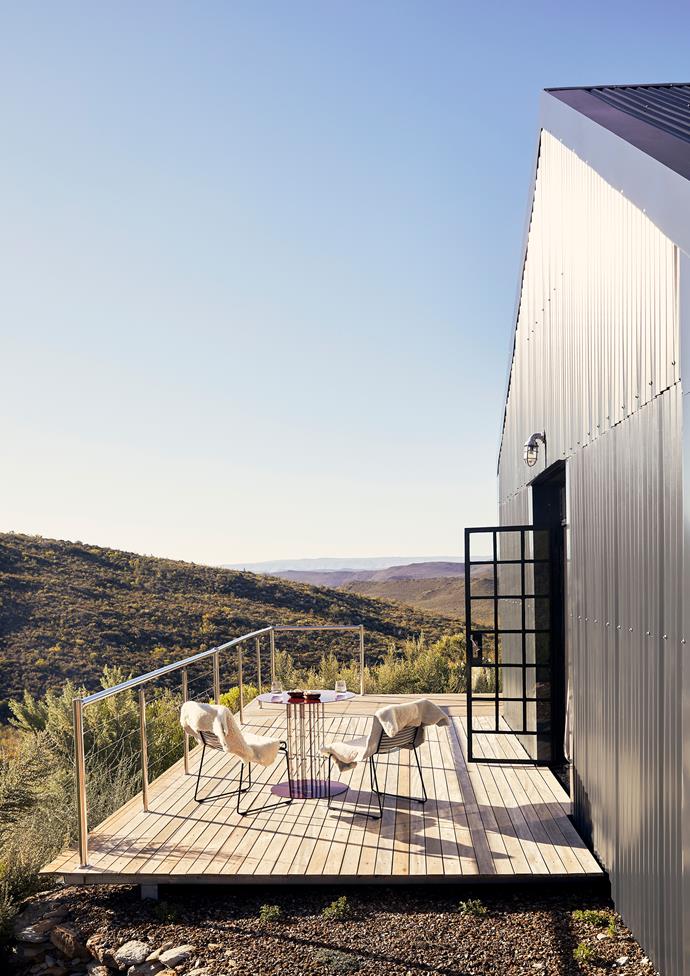
Subtly enclosing the bed is a headboard with a return detail that physically and visually creates a smaller, more intimate area. The headboard also serves as an internal barrier, separating the sleeping area from the living area behind it. The sofa leans against the back of the headboard, with a fireplace, rug, and coffee table establishing a chill-out space to relax in.

Another simple but effective design trick to divide the cabin (and make the areas read separately) was the introduction of flooring made from identical materials but in different hues. A cooler grey handmade brick was used for the kitchen and bathroom areas, while a lighter tone was chosen for the central bedroom and living area.
GOOD NEWS
The owners remained true to their ethos of touching the land lightly by opting for a small footprint and keeping the cabin off the grid.
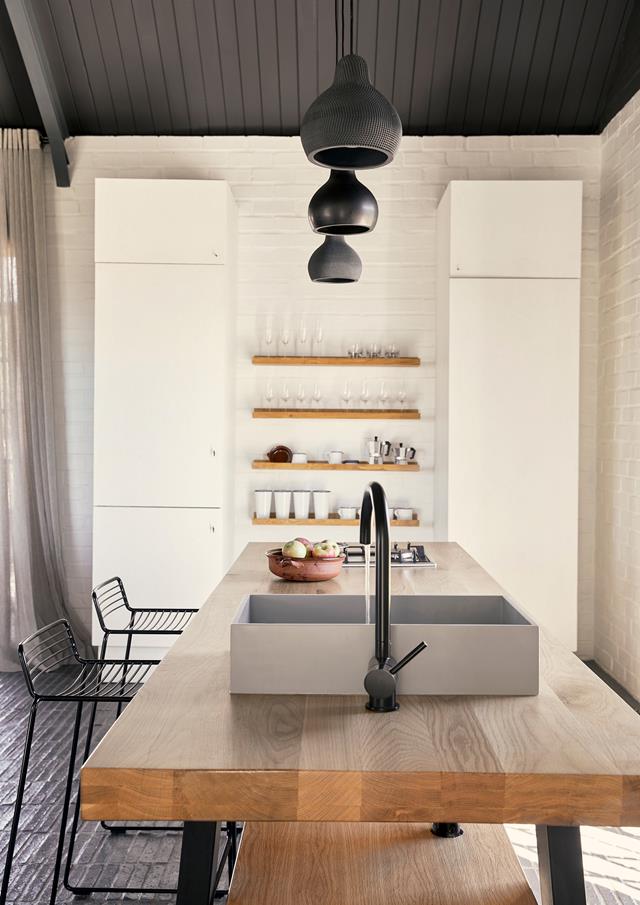
Hendre designed a multifunctional space for the kitchen, with a generous island that acts as an extension of the living room. The cabinets are custom made from untreated wood and steel, and everything else is hidden and/or integrated. “You have the beauty of the precise details of the table, but the material itself is used in its raw, natural state,” says the designer, who customised most of the furniture and fittings. The prep space opens to a west-facing terrace and barbecue area on one side, and a solar-heated hot tub – essential for nocturnal sky surveillance – on the other.
The bathroom echoes some of the kitchen’s features and materials, but is slightly softened by a traditional freestanding bathtub with claw feet and Victorian-era-inspired sinks and tapware from Burlington. The bath also serves as a romantic statement, and is easily hidden in the loose, white fabric panels that hang from the three-sided railing above it. Hugging a wall is the shower, which features bold handmade ochre tiles that reflect the earthy tones of the landscape. To the right of the shower, still on the dark-toned floor, is a robe area featuring a shelving unit designed by Hendre. Its simple steel skeleton cleverly avoids space-hogging cupboard doors, and the open design of the space allows easy access.
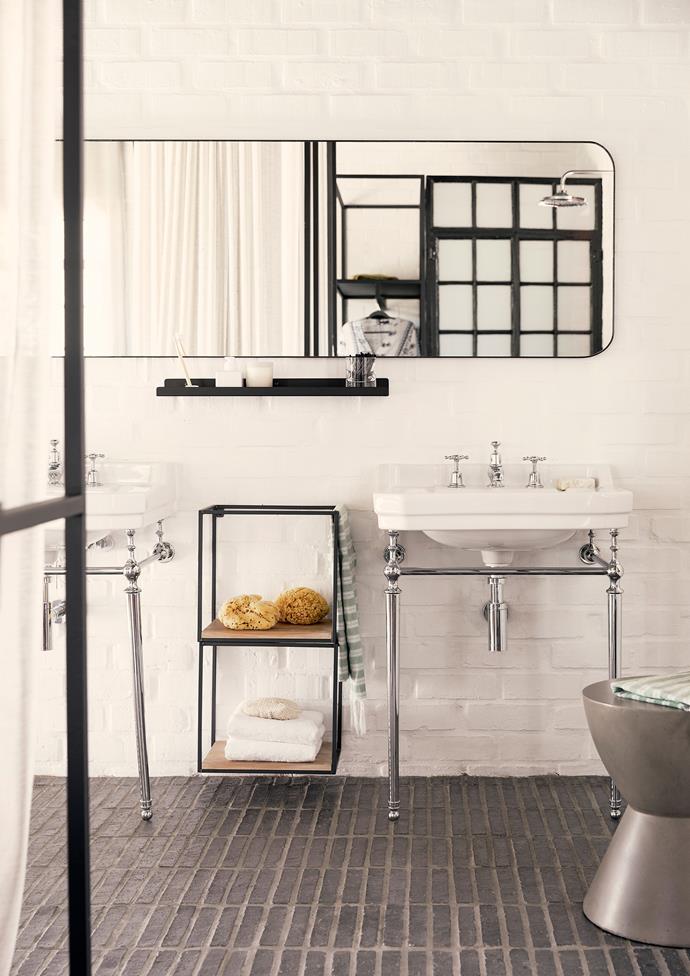
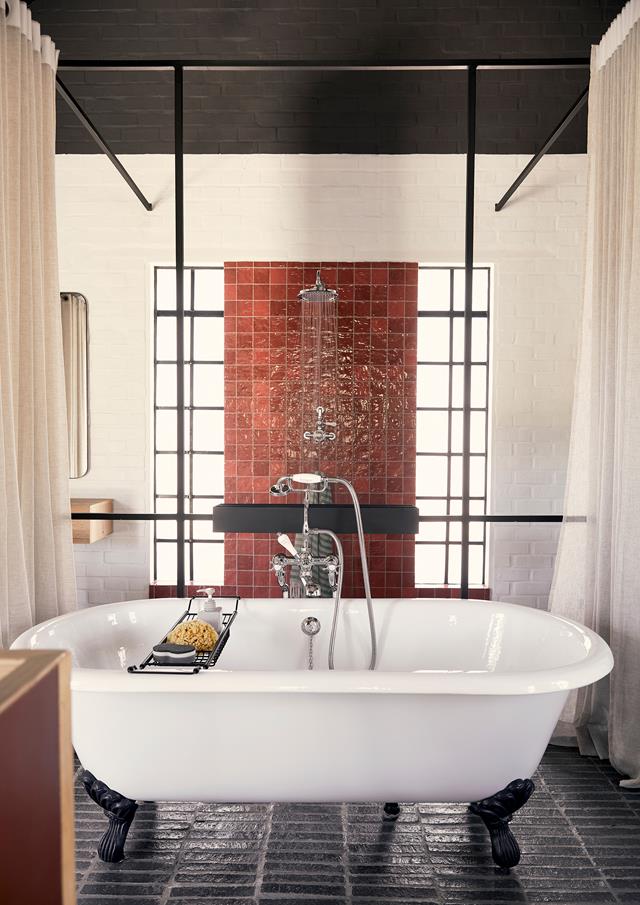
In the ‘living area’ is a two-sided fireplace, chosen for practical reasons. Hendre says that it allowed them to share the chimney of the indoor fireplace with that of the outdoor barbecue, creating a single, striking, monument-like shape that stands out from the otherwise plain structure. When you arrive, the distinctive silhouette of the chimney is a spectacular addition to the dark-steel cabin and hints at the exciting design inside.
For Cobus and Ruan, who now lease it for short stays, the cabin has the small footprint and understated luxury they were after from the start. “It does not distract from the real stars of the show,” says Cobus. “Of course, by that I mean the mountains, the sky and the fynbos.”
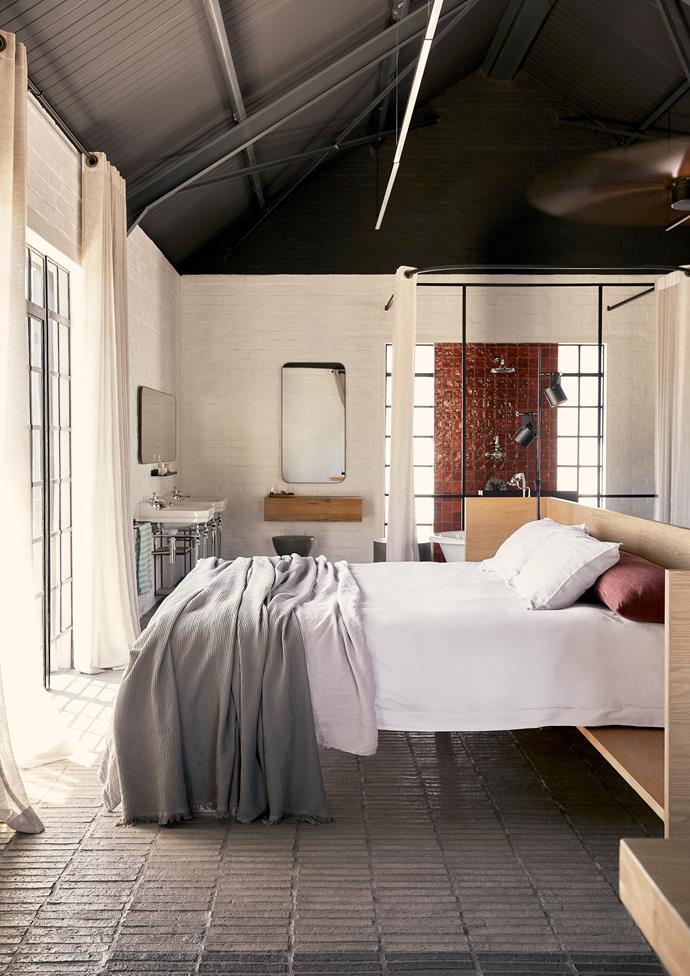
___
Source here

